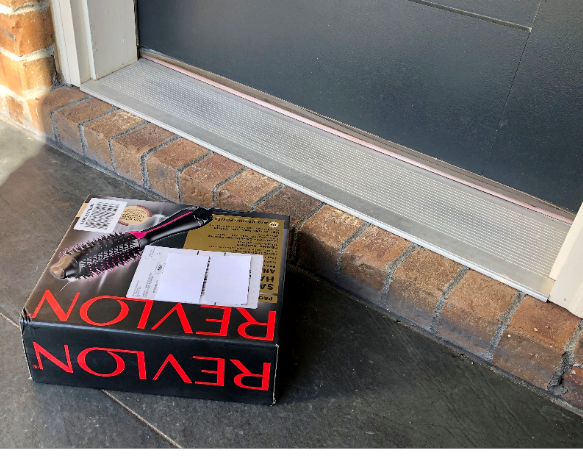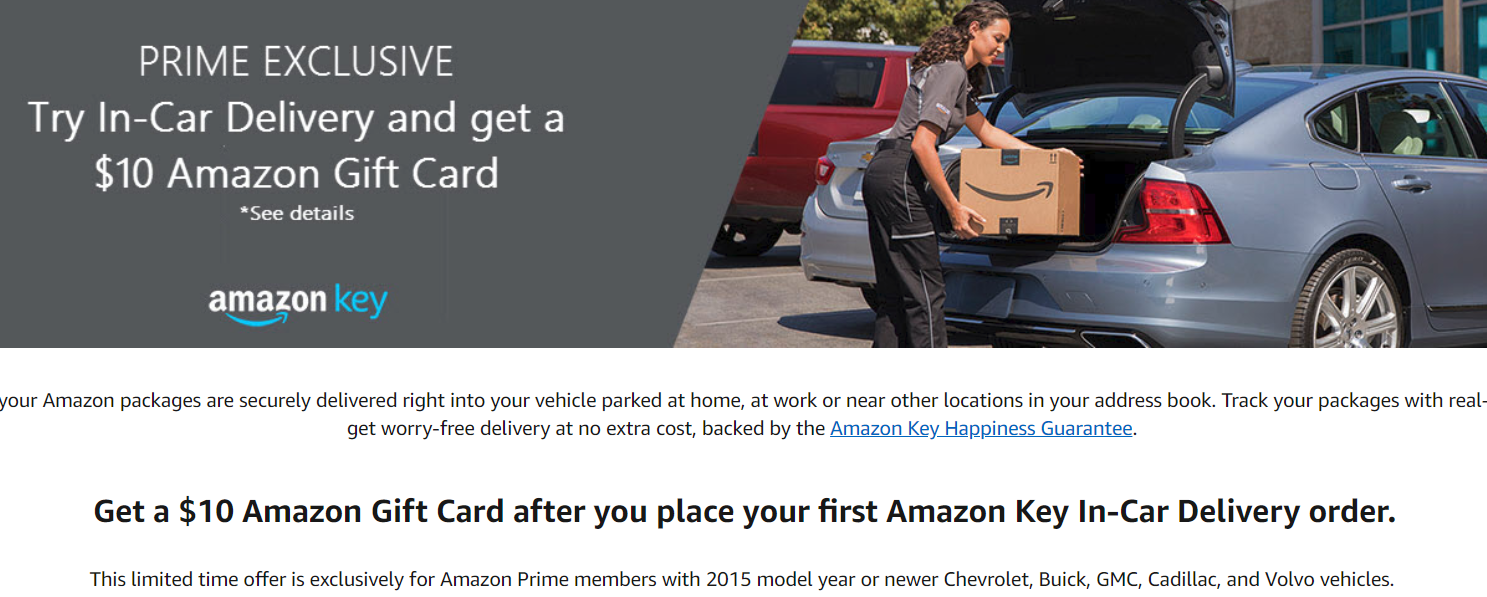First question about this Amazon delivery. . . .

Who ordered this? (Naw – that’s an easy question).
1. Where’s the box?
This was my first thought. Never received a package from Amazon, well, without a brown box. Dude – what if it was a product that I was, er, bashful about? Something I didn’t want my neighbors to know I ordered. Yeah, something like a pink hair dryer.
2. Is the product okay?
Just to be clear, I actually heard the delivery person dropping (not placing) the box on the front door step. Thud.
3. How do I feel about this?
Like many, I am a creature of habit. When things change – well – I gotta adjust. So, I was actually wrinkle-browed for about a full-minute, asking myself, “Do I need the brown box?” Hence the impetus to blog about this topic.
An operations consultant might ask, “Is the outside box critical to quality (CTQ)?” Would I be willing to pay money for it? If the product come safe and sound, do I care? Is the benefit of “privacy” worth the added package, freight expense of a brown box? Do I need a box within the box?
Actually, I am not willing to pay for the outside box – therefore, it is not CTQ.
4. Which products get the outside box?
Apparently, Amazon works with manufacturers to determine what can be shipped without an exterior box. This can be a win-win. The manufacturer doesn’t subsidize extra shipping (box) cost. They get some free advertising on the outside of the box. Amazon also saves on the extra packaging. Quick research looks like Amazon ran a pilot for 3 months, and 20K+ employees were involved in identifying products which could be shipped without an extra box. This resulted in 2.2M fewer boxes here. So smart for Amazon to crowd-source this information from the people who know shipping requirements the best (uh, the folks in the warehouse).
Amazon claims (why lie?) that over the last 10 years, they reduced 500M boxes. Collaborating with manufacturers is just one of many methods. My guess is that grouping packages must be the big driver.
5. What’s the trade-off?
No decision is free. This sounds great on the surface, but what are the opportunity costs?
- Fewer group packages; instead sending out products one at a time
- Reduced box spend, potentially lower box purchasing power
- Increased packaging on the manufacturer’s side – single box needs to be strong enough
- Larger font and pictures on boxes made for shipping – advertising from afar (not on the shelf)
- Greater errors in processing because of variation in manufacturer’s box size, color, material
5. Size of the prize?
This is an expression I heard recently from a consulting partner. Has a nice ring to it. What is the potential opportunity? Amazon revenues are $178B (2017) and their shipping costs are $11 Billion. Yes, this is where the mind of a consultant / business geek goes. . . income statement or the balance sheet. Yo, consultants, if you’re not following along, this will help. . .
6. Amazon Logistics?
Just last week, Amazon announced that it plans to compete more directly with FedEx and UPS. In addition to shipping their own packages, they will pick up products from sellers and provide an “end-to-end” service to customers. Looks like service could be cheaper because the competition charges a residential surcharge of $3.80+ per package. Basically, Fedex and UPS charge more B2C, and honestly, Amazon does B2C all day long. In that same article, you’ll see that Amazon ships about 20%+ of their stuff.
Over the last few months, I have seen a lot of Amazon Prime trucks. Hmm, that’s unique. Digging in a little to the details, it’s called Delivery Service Partnership. Amazon creates a franchise system, where a $10K investment gets your started. You hire, operate, and run teams of 20-40 delivery folks here.
In strategy class – Porter’s 5 Forces talk – Amazon is exerting buyer power by vertically integrating backwards into its supplier’s space. They have stronger negotiating power + they can pick / choose where they want to play; why increase supply where UPS already has it covered? You can envision a super excel somewhere in Seattle where they plot/plan the locations to roll this out. In high-school talk, Amazon is big, and bad, and they know it.
In their 2017 10K here, they enumerate the different types of companies they compete against: 1) retailers 2) manufacturers 3) search, shopping 4) e-commerce 5) logistics 6) cloud 7) electronic devices.
7. Economies of scale?
Bien sur. This will not take much argument. Currently, Amazon has 100M sq ft of warehousing space + 35M sq ft in the pipeline. Added together, it is approximately the size of 2/3 of Manhattan here. Economies of scale. The more they “produce”, the lower average fixed cost per unit. They have 75 warehouses, 3000 trailers, and 32 airplanes. Yes, airplanes. They are investing $1.5B in an Just watch this, and you’ll be convinced.
Still need more convincing? Amazon is investing $1.5 Billion for 200+ acres adjacent to the Cinncinati airport to make an Air Hub. Same is true in Fort Worth, TX. Yes, basically, Amazon will have airports here.
8. Economies of scope?
Here the story gets more interesting. Amazon does a ton of things. Yes, they started by delivering books. Then in 2009, they acquired Zappos, the shoe e-retailer. Still related, still made common sense. Horizontal integration. More of the same stuff. Now they do cloud services, run a grocery chain, and even an online pharmacy, Pillpack.
Amazon has always been about the customer. Ubiquitous. They are now the #3 largest place for digital advertising behind Google and Facebook. 56% of Americans start their product searches on Amazon. They want to own the customer experience, and currently with 100M Prime members globally – they’ve largely done it. Now the question is how to get the “average” customer to be more profitable?
Amazon visits my house all the time. So, hypothetically, they want to get more of my total business (wallet share), while they are here. Did you know they have Home Services? Want your house cleaned? Headlight replaced? Fitness equipment assembled? They can take care of that.
9. Where else is this headed?
Amazon is known for being an explorer culture – willing to do different things, redefine the question. Yes, there was big talk of drones a year ago. Also, if the problem is truly getting the package to the customer, then why does it need to go to their home? Why not put the products in a safe place, convenient for customers? Like an Amazon locker, or Whole Foods, or their car?
 Yes, automobile manufacturers work with Amazon to allow 3rd party access to the trunk of your car. Clearly, these people have not watched any Jason Bourne movies. Strangers + Car trunk = bad.
Yes, automobile manufacturers work with Amazon to allow 3rd party access to the trunk of your car. Clearly, these people have not watched any Jason Bourne movies. Strangers + Car trunk = bad.
10. Why do we have another hair dryer?
Stay tuned on that one.
Related posts:


John – a great read! Any impact on returns?
BR – that is such a good question. We’ll have to see, and keep track. Also, they will need to really package for shipping vs. display. Big changes in packaging design, I am sure.
John, thank you for your article. An interesting read! Makes me research the subject matter more.
Thanks for reading.
Hi John,
That’s where my head went (pun intended). It’s the package! Manufacturers must be solutions focused, can they design a customer-centric “ready for retail” carton that is also suitable for shipping? Should they? Or should there be two; one for brick and mortar retail, the other suitable for shipping (albeit somewhat more discreet)without the need for an outer carton? There are considerable economies of scale here. I liken this to “print or digital” most used to answer “both”!
Absolutely. Huge opportunity,